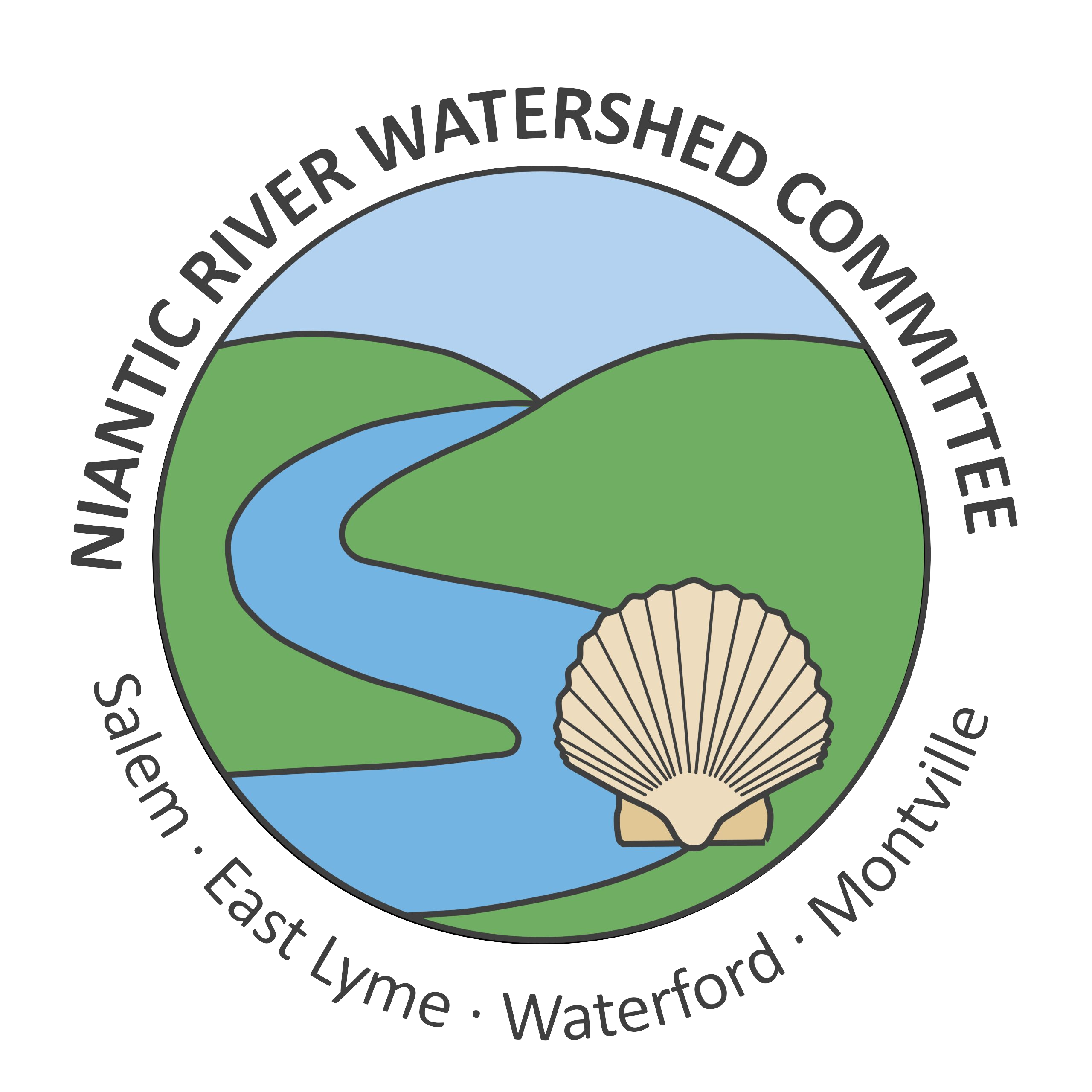The Niantic River Watershed Committee (NRWC) works with community members and leaders to monitor and boost the health of the Niantic River Watershed through research, education, outreach, and the installation of stormwater management projects.
Stream Monitoring in Latimer Brook: From 2012 to 2017, NRWC collected monthly water quality data from Niantic River tributaries to document water quality factors that include water temperature, dissolved oxygen, pH, conductivity and nitrate-nitrogen. Thereafter, we switched to quarterly event-based sampling on Latimer Brook, the largest tributary to the Niantic River.
Riffle Bioassessment by Volunteers (RBV): Each fall, NRWC collects riffle-dwelling aquatic insects from streams throughout the Niantic watershed. We do this assessment because aquatic insects have varying levels of tolerance to water pollution, and we can make relative assessments of water quality based on the number of “most wanted” aquatic insects that we find. For more information on community-based water quality monitoring and RBV projects in the state, please visit: https://portal.ct.gov/deep/water/inland-water-monitoring/riffle-bioassessment-by-volunteers-rbv.
Healthy Lawns, Healthy River: NRWC encourages property owners in the Niantic River watershed to adopt healthy lawn care practices without adverse impact to the Niantic River. Homeowners are encouraged to adopt three simple practices that will reduce the amount of nutrients that enter the Niantic River:
• Leave grass clippings on the lawn. Grass clippings are good for your lawn and shouldn’t be trashed! They contain plant nutrients: nitrogen, phosphorus, and potassium. These are the same nutrients (NPK) found in lawn fertilizer.
• Reduce the amount of fertilizer applied to the lawn by 1/3 to 1/2 or eliminate fertilizer use. Fertilizer that washes off when it rains becomes nutrient-rich run-off that flows to storm drains and nearby bodies of water. This can cause algae to grow in the water, adversely affecting water quality.
• Apply fertilizer only at optimal times. Know what grass type you have and read fertilizer product labels to determine which season(s) is best for application to your lawn. You’ll want to nourish the grass when it is actively growing to support root growth. Avoid applying fertilizer in winter or too early in the spring, when it is raining (so that it doesn’t become part of run-off), or when there’s excessive heat or drought.
Four-Town Bio-infiltration Project: The NRWC partners with towns to identify locations where stormwater management practices will improve water quality in the tributary streams. Together, we have installed a variety of stormwater management practices such as tree stormwater filters, rain gardens, and catch basin filters.
Educator Watershed Model Activity loan program: Available for short-term loan to schoolteachers and other educators are two 3-D EnviroScape models: the Watershed/Nonpoint Source Model and the Coastal Watershed Model. These models are useful for demonstrating sources and pathways of pollution while discussing pollution prevention practices with activity participants.
Teacher Water Quality Kit loan program: The NRWC has water quality test kits available for loan to teachers to take in the field. Students learn the importance of water quality and methods for collecting water quality information.
Stream corridor assessment of Latimer Brook: The NRWC conducts assessments by walking along Latimer Brook to determine if any debris and/or discharge issues exist that would affect water quality of the brook and the Niantic River.
Riparian buffer installation: The NRWC installed a coastal riparian buffer at Mago Point, Waterford to enhance water quality of the Niantic River.
Rain Garden Initiative: The NRWC grants up to $100 for Niantic River watershed town residents to purchase plants to install rain gardens on their properties. Rain gardens are typically vegetated depressions that collect rainwater where it soaks into the ground rather than running off. This helps to capture pollutants, recharge groundwater, and decrease the need for extra watering, thereby helping Niantic River water quality.
A Sampling of NRWC Accomplishments:
- 2024 – Launched Educator EnviroScape Model loan program
- 2023 – Sponsored and hosted the Niantic River Watershed Summit
- 2020-2022 Healthy Lawns, Healthy River – Partnered with The Nature Conservancy (TNC) to discuss best lawn practices with watershed residents
- 2020 – The Niantic River Watershed Protection Plan was updated
- 2018-2019 – Installed rain garden and infiltration practices at East Lyme High School in partnership with the Eastern Connecticut Conservation District (ECCD) and Town of East Lyme
- 2018 – Installed rain gardens as part of ECCD’s Long Island Sound Futures Fund (LISFF) 100 Rain Barrels-100 Rain Gardens project
- 2017-2018 – Installed stormwater BMPs in downtown Niantic in partnership with ECCD and Town of East Lyme
- 2017 – Completed five years of baseline stream water quality monitoring, began episodic stream sampling
- 2017 – Launched the watershed-wide Rain Garden Initiative
- 2016 – Installed tree filters at Mago Point in Waterford in partnership with Town of Waterford and CT DEEP Boating Division
- 2015 – Partnered with the ECCD and Town of East Lyme to install tree filters in Niantic
- 2015 – Incorporated and became a 501(c)(3) non-profit organization
- 2014 – Installed coastal riparian buffer at Mago Point in Waterford
- 2014 – Conducted stream corridor assessment of Latimer Brook
- 2013 – Partnered with the ECCD and East Lyme to install tree filters on Colony Road
- 2012 – Launched Teacher Water Quality Kit loan program
- 2012 – Assisted Friends of Oswegatchie Hills with development and installation of riparian buffer at Clark Pond (Oswegatchie Hills Nature Preserve)
- 2012 – Established Volunteer Water Quality Monitoring program
- 2011 – Initiated Landscaping for Water Quality program
- 2011 – Established NRWC Board of Directors
- 2011 – Sponsored Niantic River Watershed Summit
- 2011 – Watershed Compact Signed by Watershed Towns
- 2010 – Conducted riparian buffer workshops with CT Sea Grant
- 2009 – Produced Niantic River Watershed Protection Plan Guided Summary
- 2009 – Installed Low Impact Development (LID) practices at, and in partnership with, Children’s Museum of SE CT, in East Lyme
- 2008 – Niantic River Watershed Advisory Group formed
